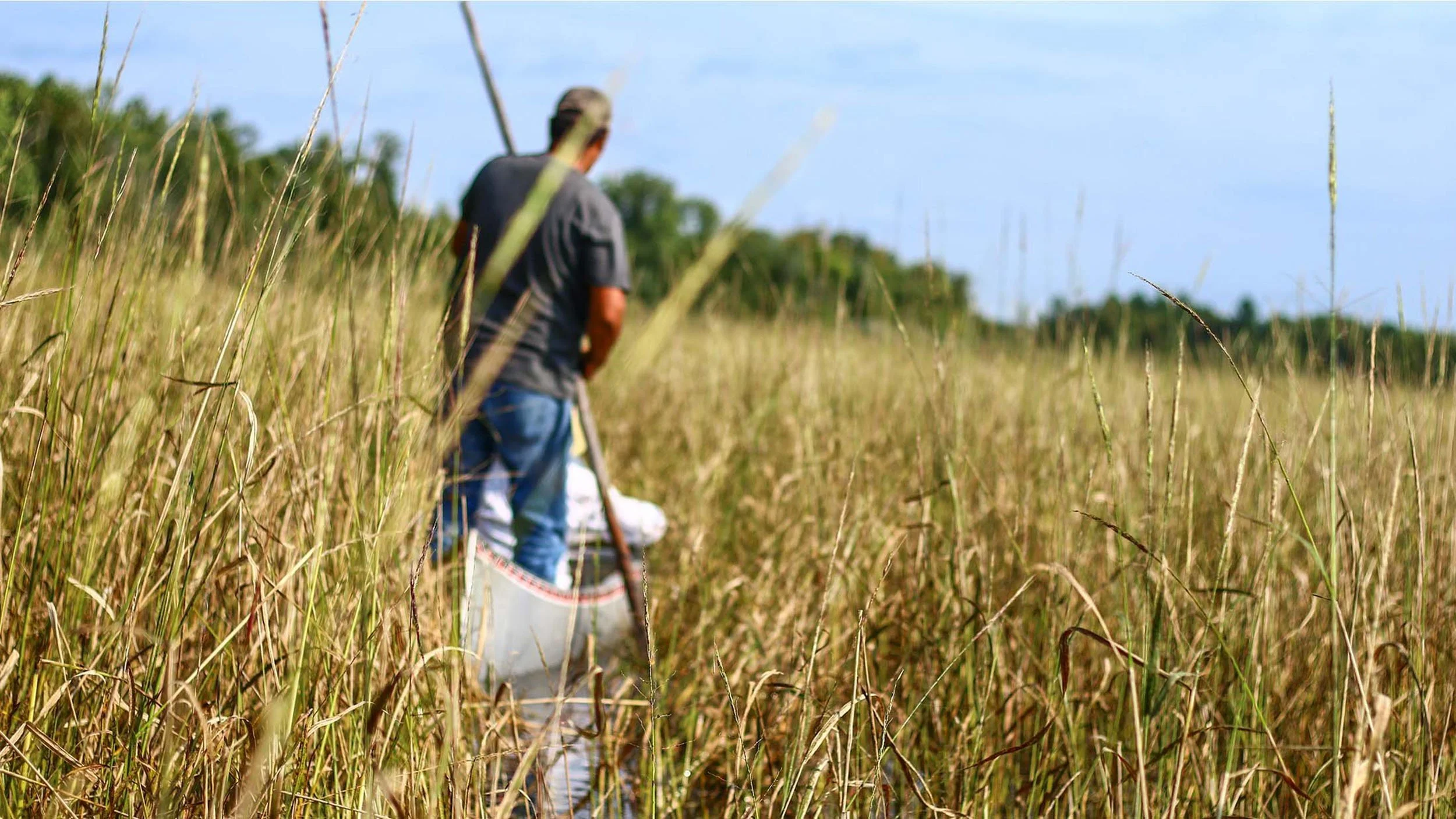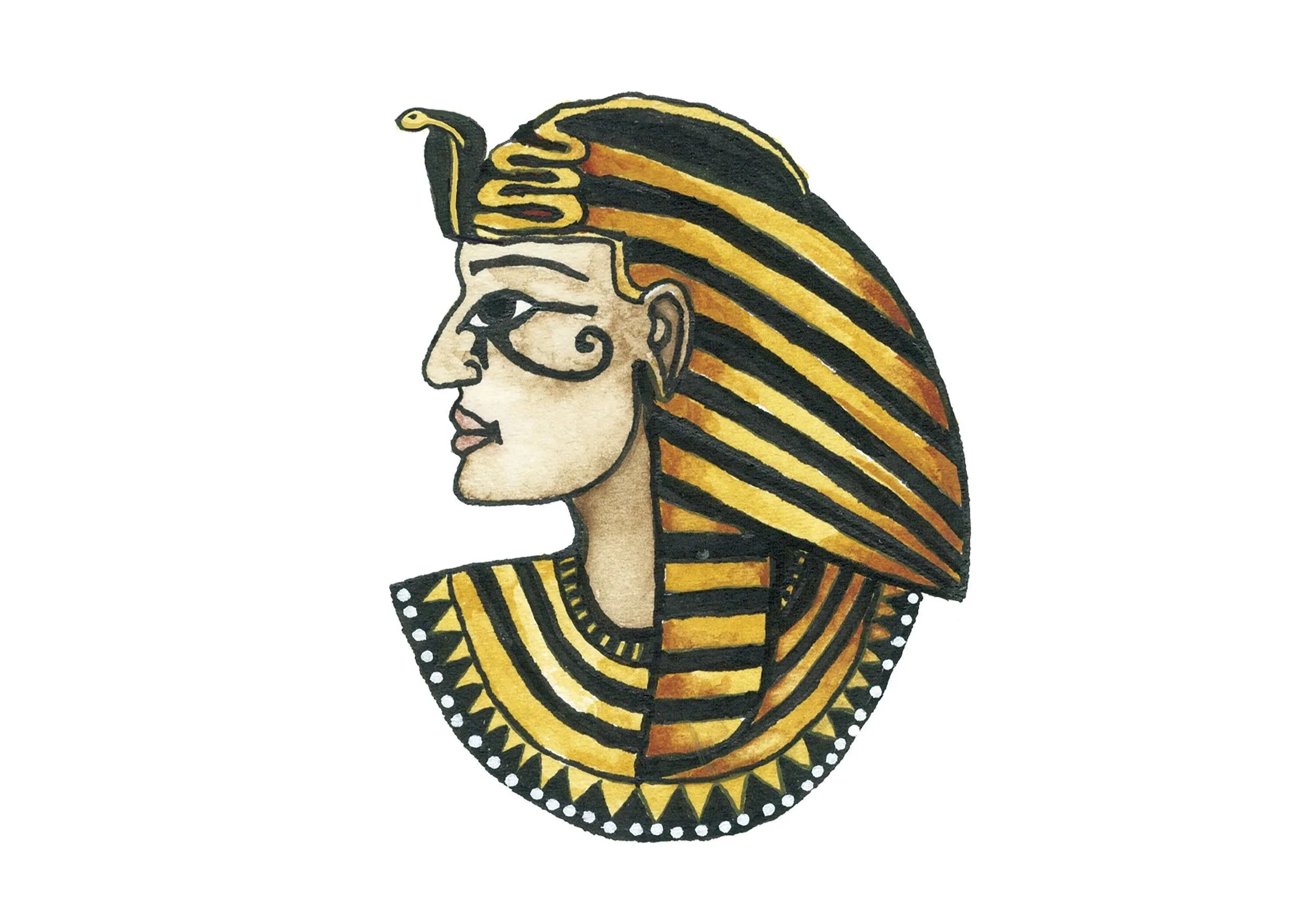August Days of Note, and an Egyptian Snake Goddess
Harvesting wild rice in Minnesota. Image from Rise and Repair.
Native American names are given to the moon cycles, generally assigned to the full moon, which occurs on August 9. To the Ojibwe of the upper Midwest states and Canada, it may be the ricing or the blackberry moon; to the Mahican and Oneida, it's the corn moon; to the Seneca, it's the hot moon. (From AIANTA.) In Minnesota, the wild rice harvest season begins August 15, in accordance with the 1854 Treaty Authority, but only if the rice is ripe, and only for those who have the proper permits.
The month's name comes courtesy of the Romans, who used to call it Sextilis, meaning sixth (month), when March was the first month of the year. It was renamed in 8 BCE by the Roman Senate to honor Augustus Caesar, who had several triumphs during this month, most notably the conquest of Egypt. The month also used to have 30 days, but either Augustus or his supporters could not allow Julius’s month (July) to have more days than his, so they added a day to August and took it away from February.
The snake of the month from the Useful Calendar is Egyptian snake goddess Wadjet, protector of pharaohs, represented by a cobra on the sovereigns’ official headgear. Cleopatra, the last pharaoh of Egypt, died by suicide on August 12, 30 BCE, after the Roman ruler Octavian conquered Egypt, to avoid being displayed as a captive in a triumphal parade. Contrary to popular myth, she did not allow an asp (Egyptian cobra) to bite her, but most likely took some kind of poison. Octavian later became Augustus, the first Roman emperor.
To the Anglo-Saxons, the days are still Æfteraliða (see June Days for explanation), but when the new moon becomes visible on Aug. 24, it's Weodmonath, meaning month of plants.
Fri., 1. Lughnasadh is an ancient Gaelic festival to celebrate the beginning of the harvest season, named in honor of the god Lugh, who protected the harvest from drought, blight and other natural hazards, or from some other supernatural being who represented those things. Other versions of the holiday’s origin myth say Lugh founded it to honor the death of an earth goddess, who may have personified the harvest. It’s a public holiday in Ireland.
When the festival became Christianized, it was renamed Lammas, shortened from “Loaf Mass,” because it was a tradition for people to bake loaves of bread from the first wheat harvest and bring them to church to be blessed, then used in a special communion mass thanking God for the harvest.
It occurs halfway between the summer solstice and the autumn equinox and as such is known to Neopagans as a cross-quarter holiday. The other cross-quarter days are Imbolc (Feb. 1), May Day, and Beltane (aka Halloween).
Sun., 3. Tisha B'Av, aka 9th of Av, is a Jewish observance of fasting and prayer in remembrance of the destruction of the First and Second Temples of Jerusalem, and other tragic events that occurred on this date in the Hebrew calendar. The observance begins at sunset Aug. 2.
Tue., 5. National Night Out is a civic celebration in the US to promote police-community relationships and encourage neighbors to get to know each other. People gather outdoors in the evening to share food and conversation, often cordoning off the shared street where permitted and setting up tables and chairs. Local elected officials and police make the rounds to visit these gatherings. Some localities hold educational activities and safety workshops. It was started in 1984 as an initiative of the National Association of Town Watch.
Weds., 6. Hiroshima Peace Memorial Ceremony is held at the Hiroshima Peace Memorial Park to commemorate the day in 1945 that the US dropped an atomic bomb on the city. The event includes a silent prayer and ringing of the peace bell, followed by other rituals. Another ceremony is held in Nagasaki on the 9th. Similar events are held around the world.
Sat., 9. On August 9, 1966, South African women participated in a national march to protest the pass laws of the apartheid system. The event is commemorated in South Africa as National Women’s Day.
Also on the ninth, Raksha Bandhan is a Hindu celebration of sibling relationships.
The Inume Pass in Kai Province. 1830. Woodblock print by Katsushika Hokusai, from the series Thirty-six Views of Mount Fuji. Metropolitan Museum of Art Open Access Project.
Mon., 11. Yama no hi/Mountain Day was established in Japan in 2016 to promote appreciation of the country’s mountains, which cover about 70 percent of the country’s land mass. Some form of this observance had been taking place in mountainous regions for many years before it was adopted as a national holiday.
Wed., 13–Fri., 15. Obon is a traditional Japanese Buddhist “Festival of Souls” to honor deceased ancestors; it is not an official public holiday, but many businesses close.
Thu., 14. Pakistan’s Independence Day. See next item.
Fri., 15. India’s Independence Day celebrates the end of British colonial rule in 1947, when India was established as a secular republic, and Pakistan as a separate, Muslim country. According to the Indian Constitution, the country should have no state religion. Under Prime Minister Narendra Modi, who is a Hindu Nationalist, many observers feel that the country no longer abides by that rule, although the Constitution has not been amended to remove this provision.
Liberation Day marks the liberation of Korea from Imperial Japan in 1945, followed by the establishment of the Republic of Korea (ROK, aka South Korea) on this day in 1948, and of the Democratic People’s Republic of Korea (DPRK, aka North Korea), on Sep. 9, 1948.
Assumption Day, known as the Dormition of the Theotokos in the Orthodox church, honors Mary’s entrance into Heaven.
Krishna Janmashtami celebrates the birthday of the Hindu god Krishna.
Sun., 24. Independence Day in Ukraine. On this day in 1991, Ukraine declared its independence from the USSR as the Soviet empire was collapsing. On Dec. 1, 1991, about 90 percent of Ukrainians voted to support the resolution.


